James S. Griffith Collection of Mayo and Yoeme Pascola Masks
The Iconography of the Masks
Mayo pascola masks are small in size, made out of wood, and have an oval shape. They average around 19 cm by 13 cm. Pascola masks generally depict male human beings, but goat-like animals are also portrayed. Although infrequent, some masks appear to represent female human beings as well. The base color for the Mayo mask is usually black, but brown and blue coloring is used also.
Two formative characteristics of the pascola mask are the beard and the eyebrows. Made with either animal hair, usually horse or goat, or ixtle (agave) fiber, these features are attached to the mask through tiny drilled holes. In keeping with tradition, the hair is white or pale in color. Short, the beard usually measures about 10 cm, but may extend as long as 20 cm. The eyebrows are so long as to cover the entire face. Other physical characteristics that make up a face, such as eyes, nose, and mouth, are realistically depicted, but vary from maker to maker.
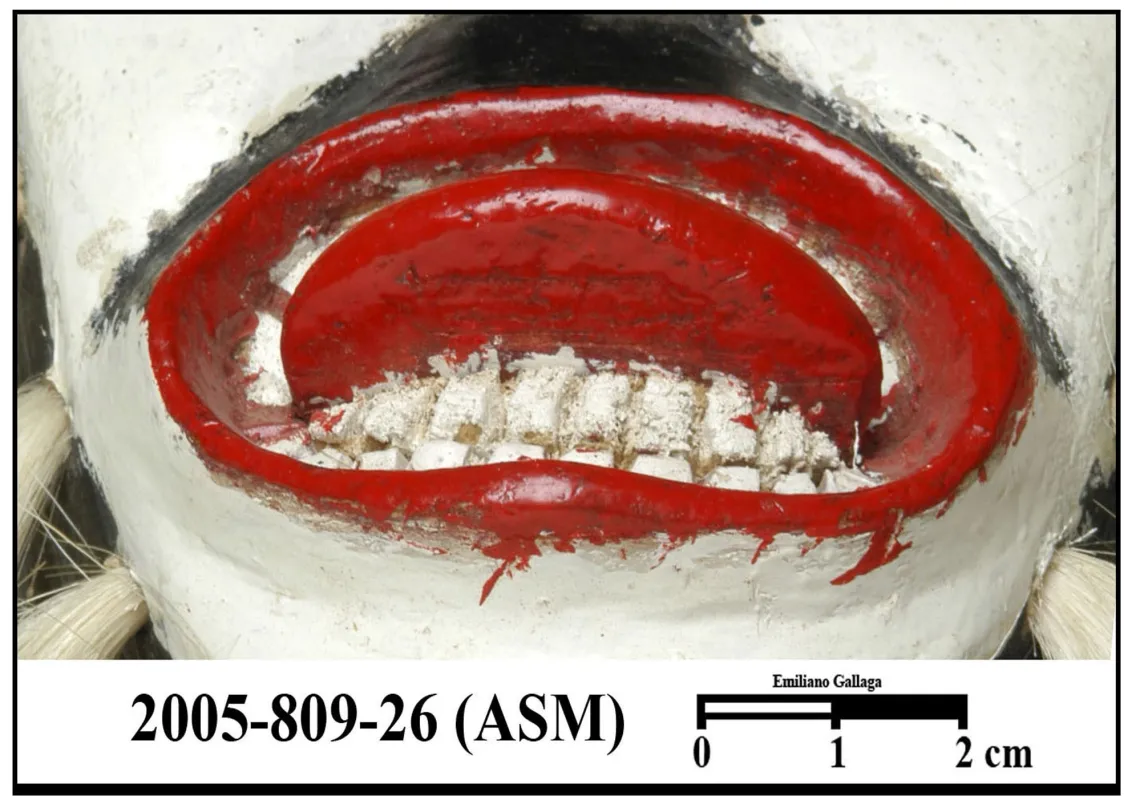
Exterior
photo courtesy Emiliano Gallaga
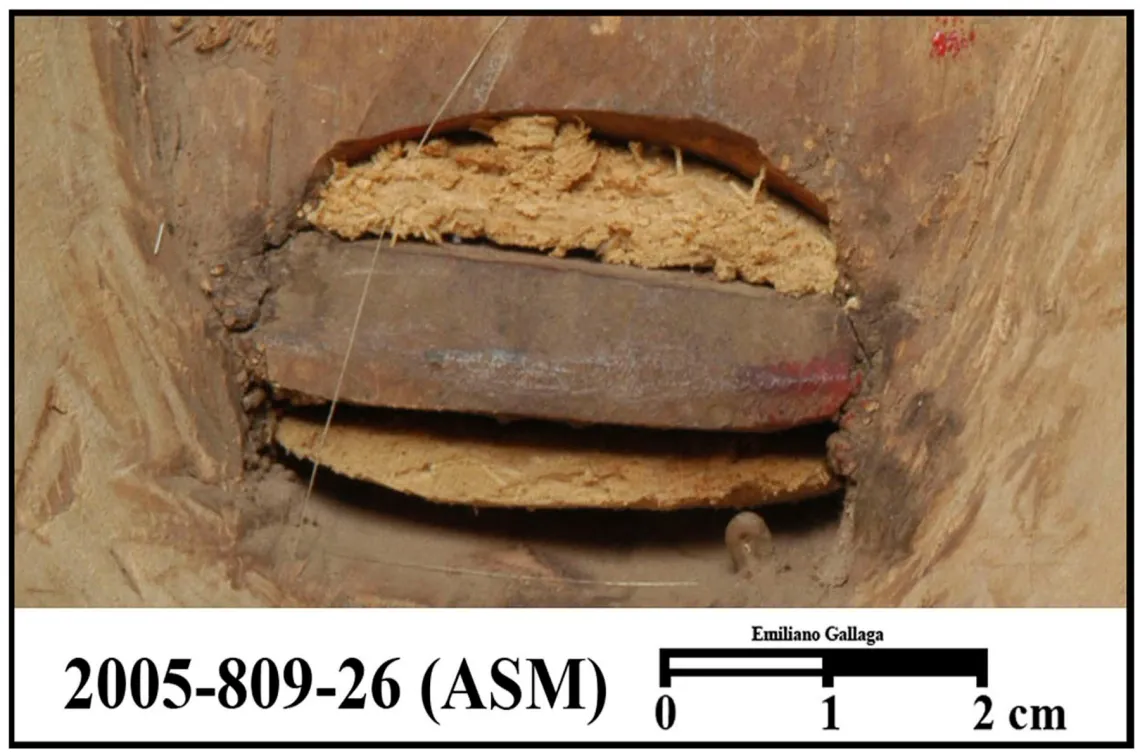
Interior
photo courtesy Emiliano Gallaga

Exterior
photo courtesy Emiliano Gallaga
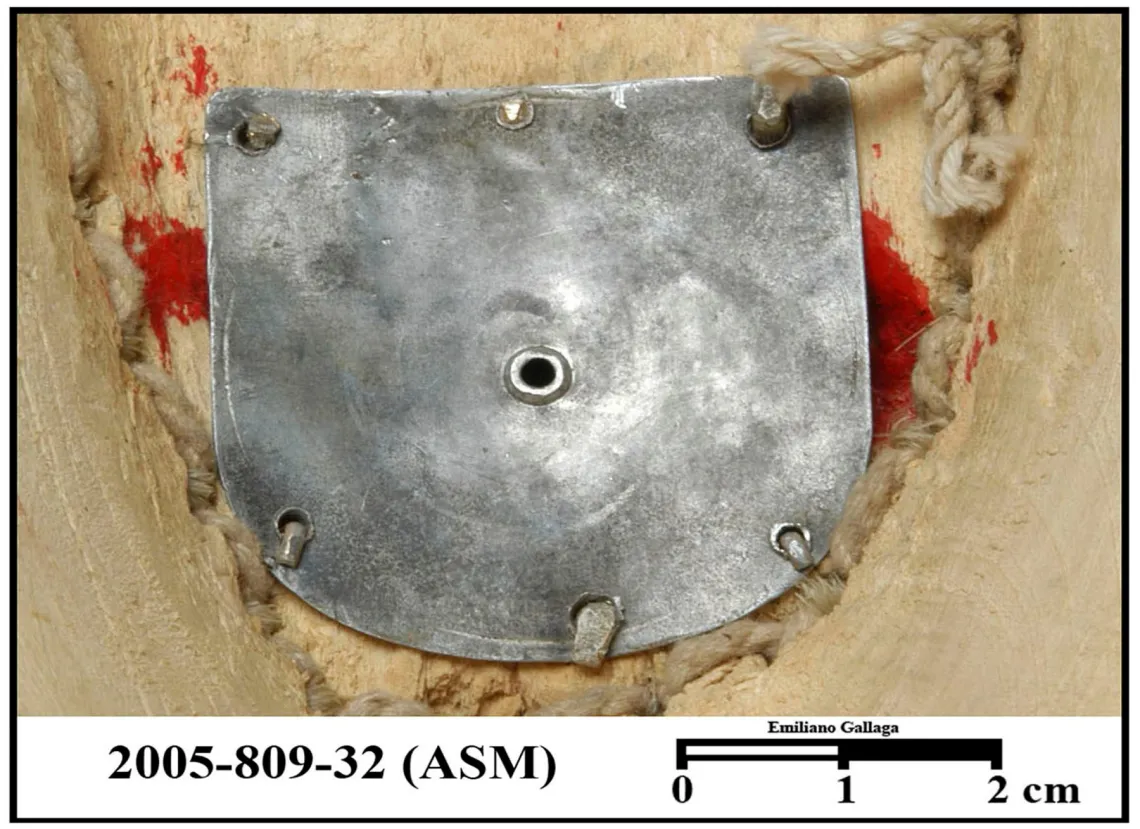
Interior
photo courtesy Emiliano Gallaga
Eyes are always carved completely through in order for the dancer to see when the mask is covering the face. Noses are well-defined and occasionally may be decorated. The mouth is frequently open showing the upper row of teeth with a protruding tongue in a burlesque fashion. Some masks include an opening in the mouth to help the dancer breathe. Made of leather or cord, a strap tied through two holes in the mask’s sides at eye level secures the mask to the dancer's head.

Cross on chin
photo courtesy Emiliano Gallaga
Pascola masks exhibit unique decorative elements. The most distinctive one is the cross, located normally on the forehead and sometimes on the chin.
The cross is thought to protect the dancer from witches and devils. Tellingly, if the mask is meant for sale to tourists it often does not display a cross. Griffith recorded four types of crosses:
- Greek
- Latin
- Patée
- “Alcario” (a type of Orthodox cross)
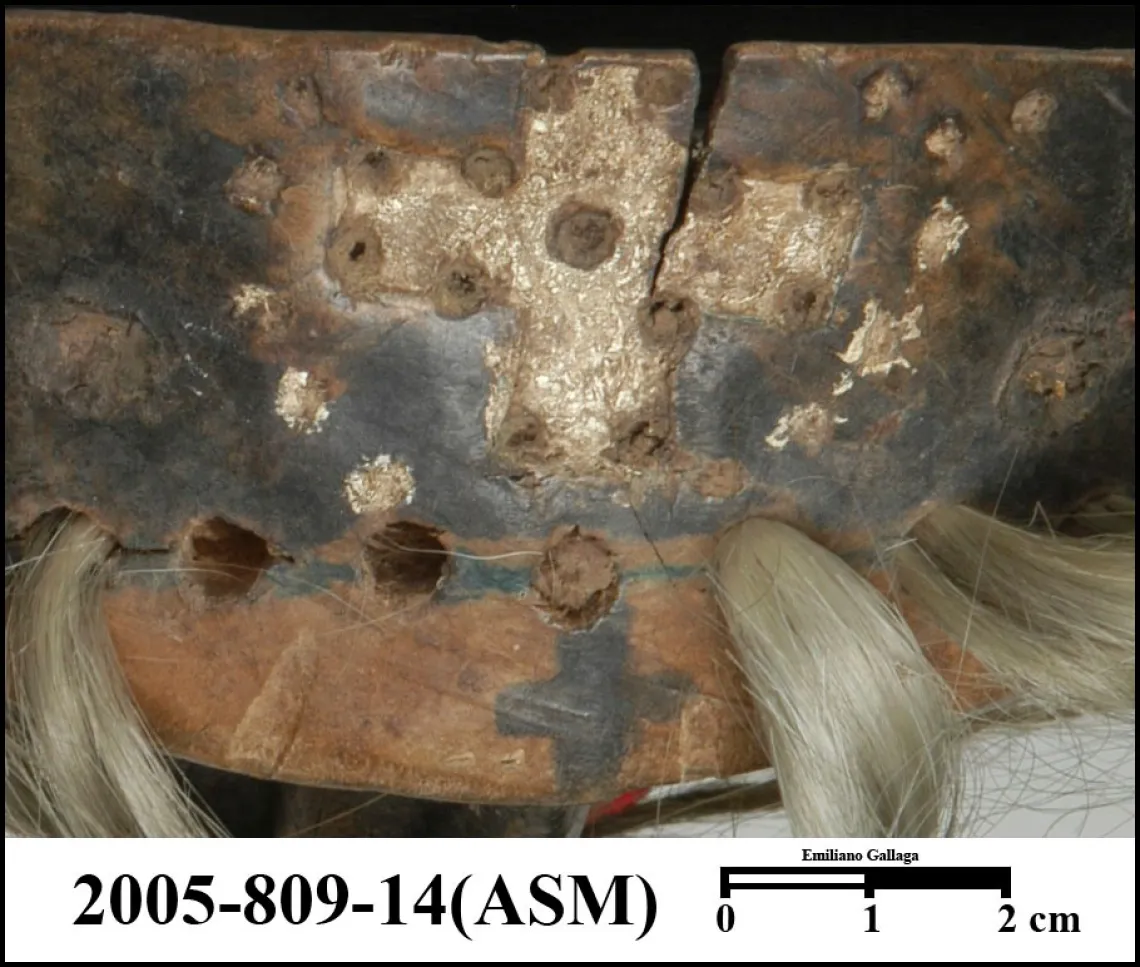
Greek cross
photo courtesy Emiliano Gallaga
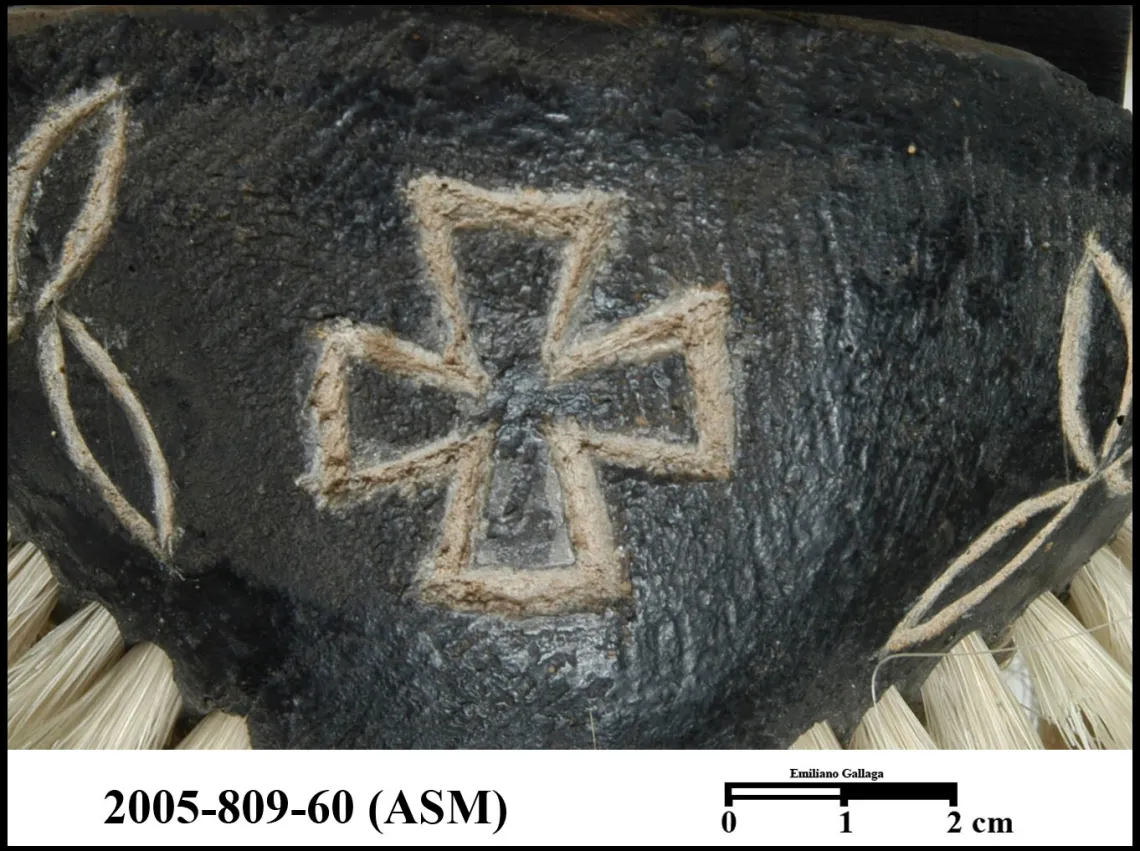
Patee cross
photo courtesy Emiliano Gallaga
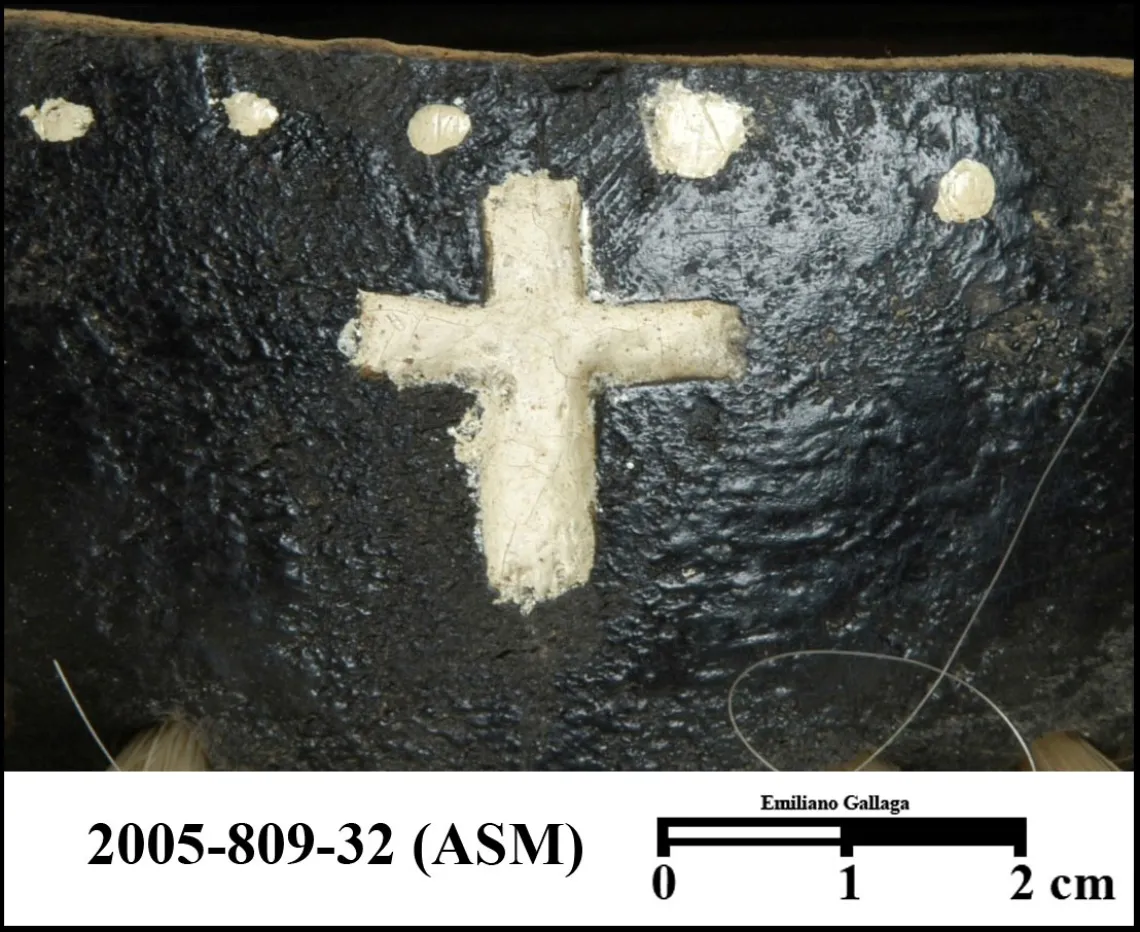
Latin cross
photo courtesy Emiliano Gallaga
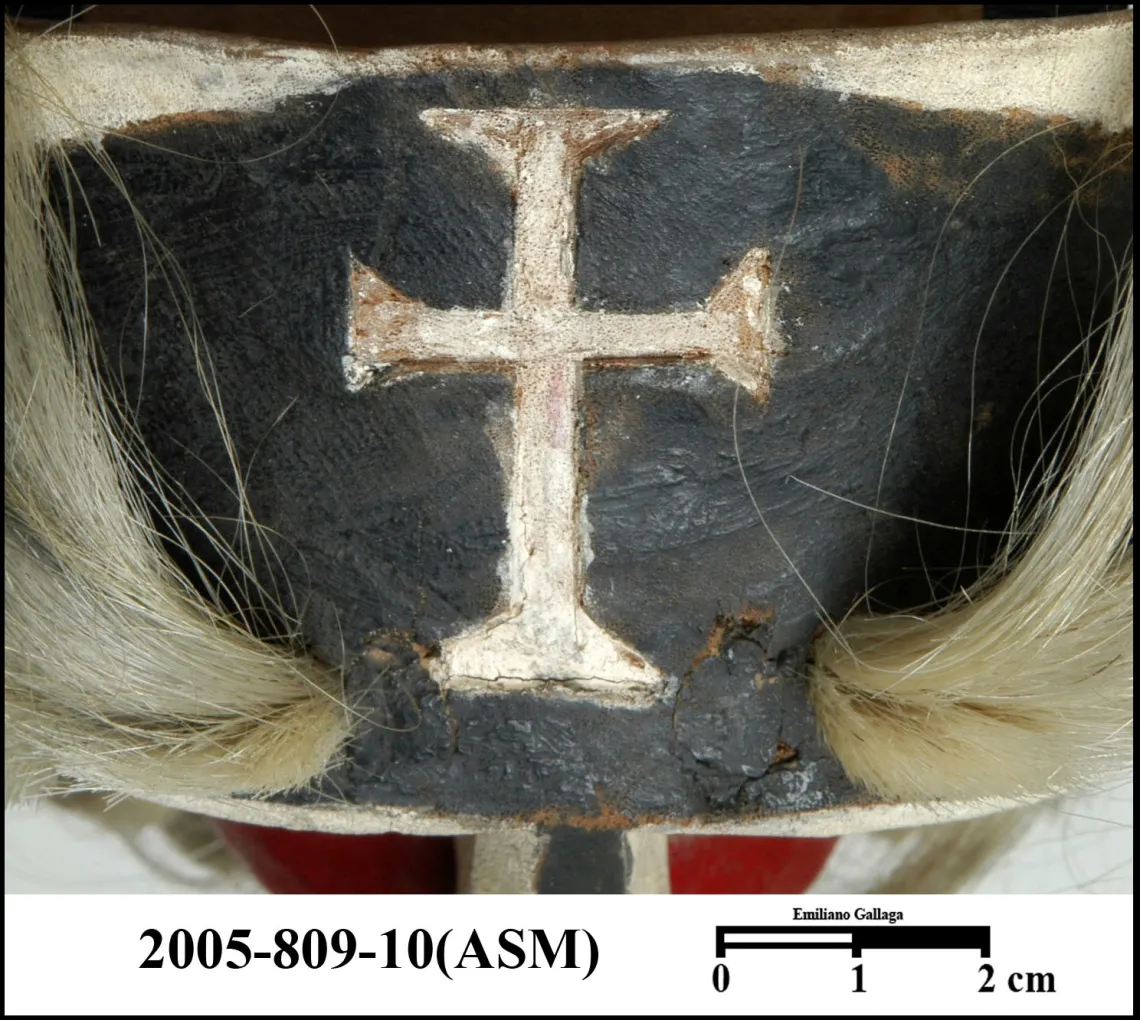
Alcario cross
photo courtesy Emiliano Gallaga
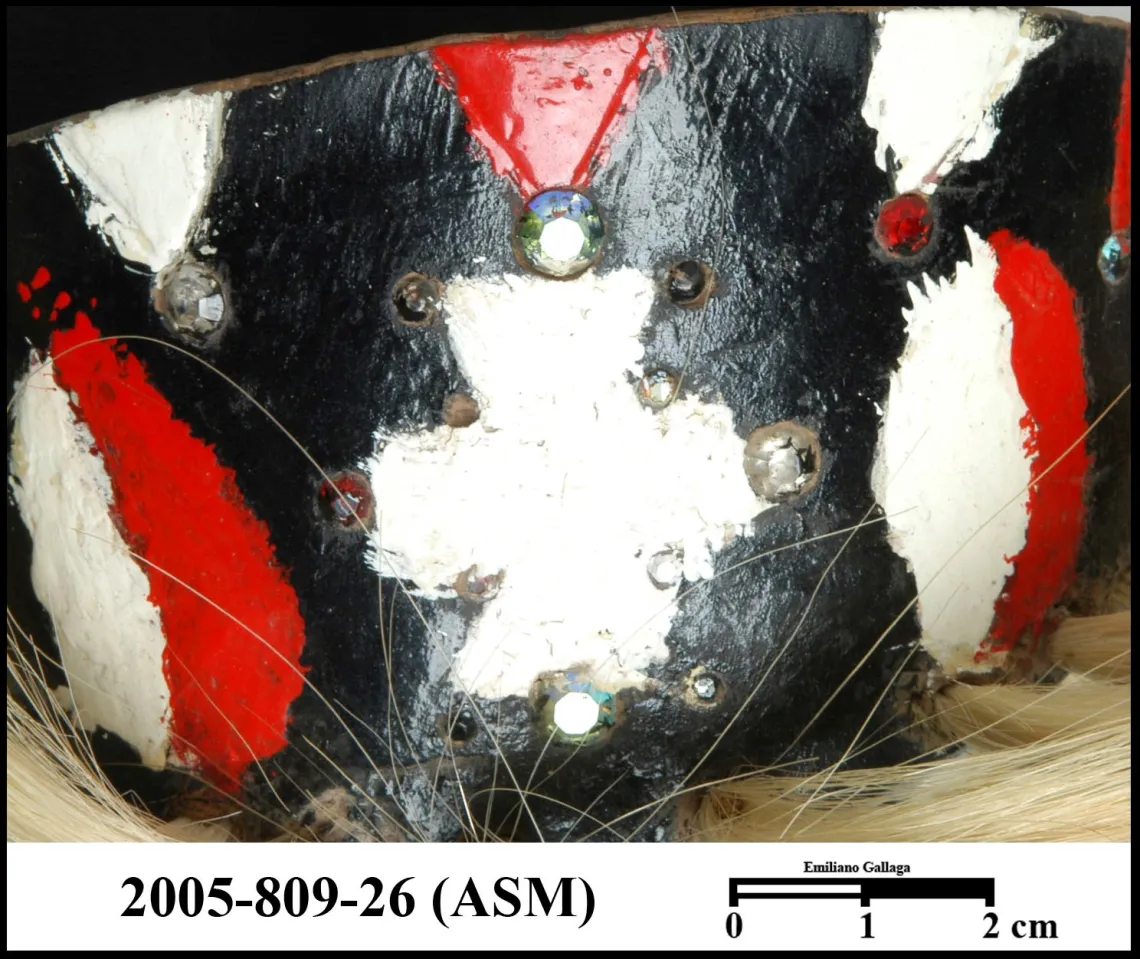
Leaves
photo courtesy Emiliano Gallaga
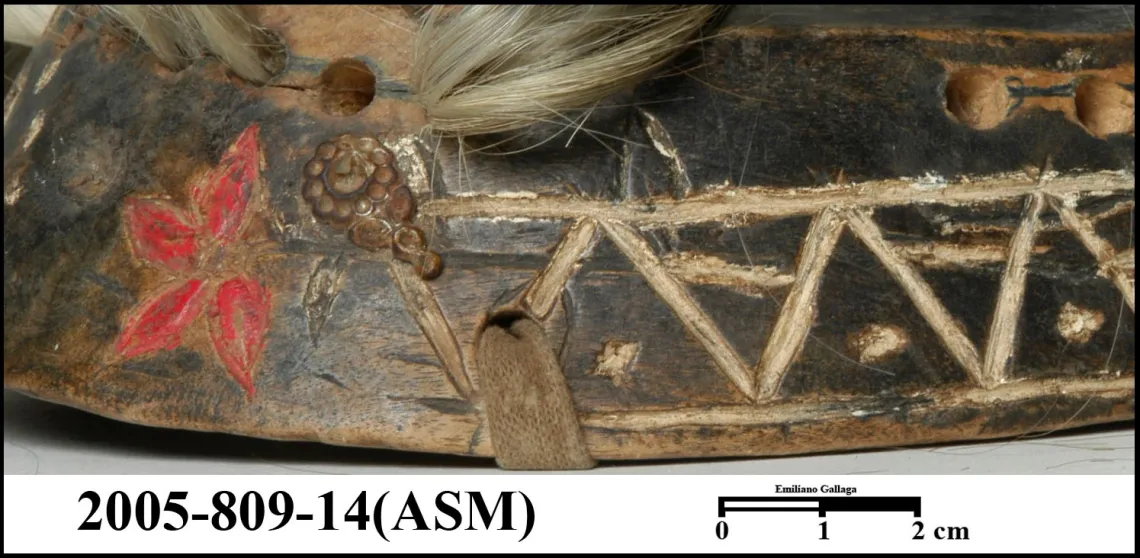
Flowers
photo courtesy Emiliano Gallaga

Letters
photo courtesy Emiliano Gallaga
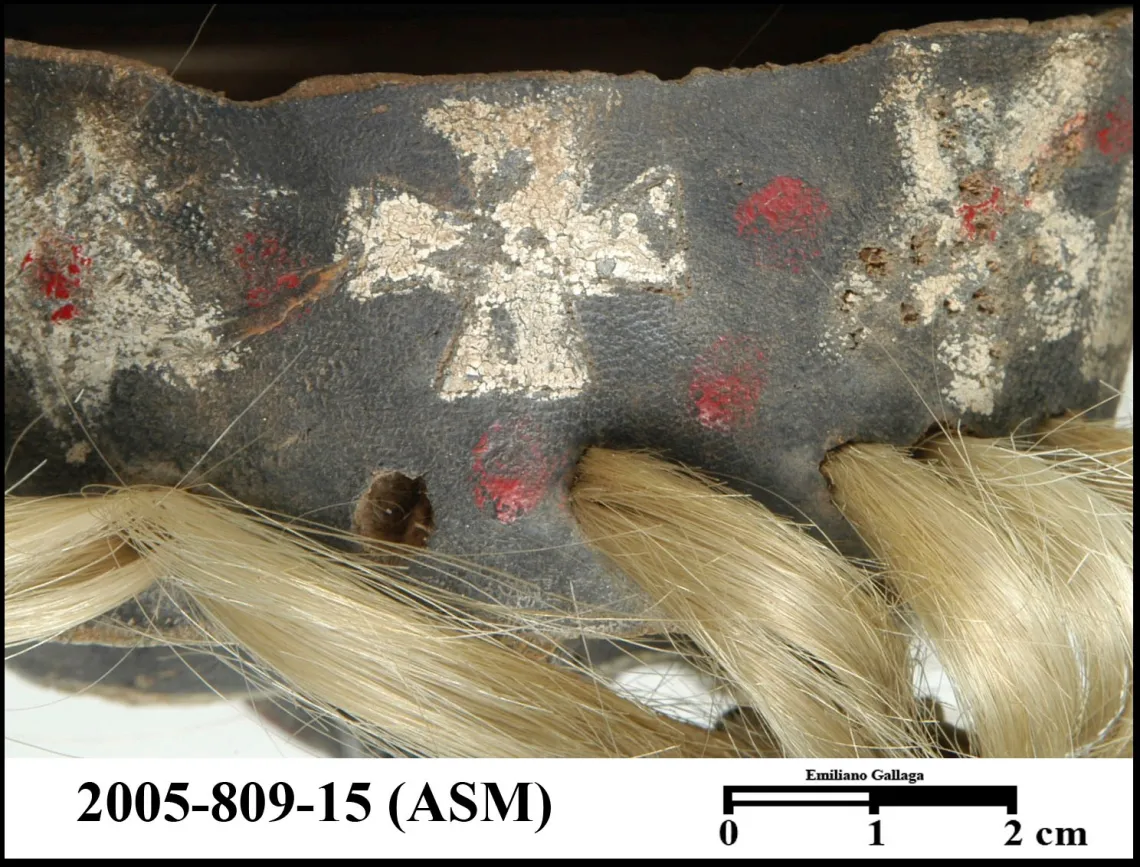
Stars
photo courtesy Emiliano Gallaga





